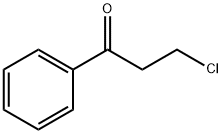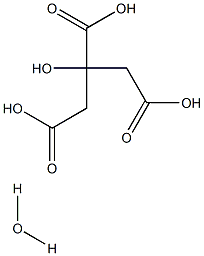3-Chloropropiophenone , >96.0%(GC) , 936-59-4
Synonym(s):
β-Chloropropiophenone;3-Chloro-1-phenyl-1-propanone
CAS NO.:936-59-4
Empirical Formula: C9H9ClO
Molecular Weight: 168.62
MDL number: MFCD00000990
EINECS: 213-317-6
| Pack Size | Price | Stock | Quantity |
| 5g | RMB23.20 | In Stock |
|
| 25G | RMB51.20 | In Stock |
|
| 100G | RMB158.40 | In Stock |
|
| 500g | RMB774.40 | In Stock |
|
| others | Enquire |
PRODUCT Properties
| Melting point: | 48-50 °C(lit.) |
| Boiling point: | 113-115 °C4 mm Hg(lit.) |
| Density | 1.1115 (rough estimate) |
| refractive index | 1.5350 (estimate) |
| Flash point: | >230 °F |
| storage temp. | Inert atmosphere,Room Temperature |
| solubility | Chloroform (Slightly), Methanol (Slightly) |
| form | Solid |
| color | Off-White to Pale Yellow |
| Water Solubility | Insoluble |
| BRN | 2043580 |
| Stability: | Stable. Incompatible with strong bases, strong oxidizing agents. |
| CAS DataBase Reference | 936-59-4(CAS DataBase Reference) |
| NIST Chemistry Reference | 1-Propanone, 3-chloro-1-phenyl-(936-59-4) |
| EPA Substance Registry System | 1-Propanone, 3-chloro-1-phenyl- (936-59-4) |
Description and Uses
3-Chloropropiophenone is a chiral compound that is used as an antidepressant drug. It was first synthesized in the 1950s and has been studied extensively for its pharmacological effects. It is a racemic mixture of two enantiomers, one of which is active and the other inactive. The active enantiomer binds to serotonin receptors and inhibits the reuptake of serotonin, which leads to an increase in serotonin levels. The inactive enantiomer does not bind to serotonin receptors and does not inhibit the reuptake of serotonin. 3-Chloropropiophenone has been shown to be effective when administered at an optimum concentration of 5 milligrams per kilogram body weight.
3-Chloropropiophenone was used in the asymmetric reduction of (S)-3-chloro-1-phenylpropanol using preheated Candida utilis cells immobilized in calcium alginate gel beads. It was also used in the synthesis of (R)-3-chloro-1-phenyl-1-propanol via asymmetric reduction using in-situ generated oxazaborolidine catalyst derived from (S)-α,α-diphenylprolinol. It is a precursor of phenyl vinyl ketone.
Safety
| Symbol(GHS) |  GHS07 |
| Signal word | Warning |
| Hazard statements | H315-H319-H335 |
| Precautionary statements | P261-P271-P280 |
| Hazard Codes | Xi |
| Risk Statements | 36/37/38 |
| Safety Statements | 37/39-26-24/25 |
| WGK Germany | 3 |
| TSCA | Yes |
| HS Code | 29147000 |





